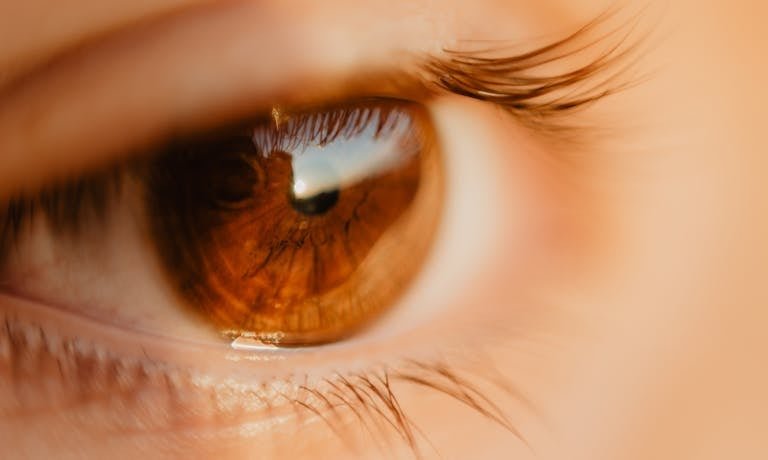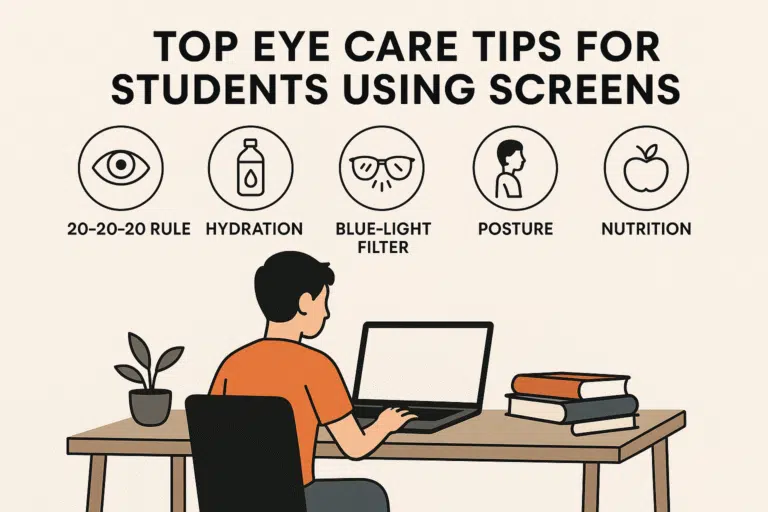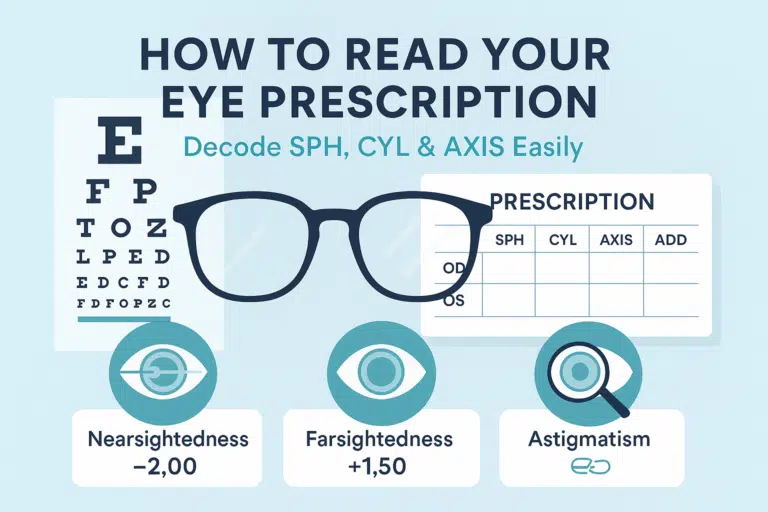Decode “D.S.” on Your Eye Prescription – No Astigmatism Needed
Have you ever looked at your eye prescription and wondered, “What does D.S. mean?” You’re not the only one! Such a small abbreviation tends to haunt individuals following an eye test.
My name is Laura, and I am a writer and founder of EyesOnHunt.com, where I assist you in figuring out all the details of eye care, glasses, and contact lenses. I have watched over the years as people have asked the same question: Does D.S. mean perfect vision? Does it mean I don’t need glasses?
In this blog, I’ll clearly explain what D.S. means on an eye prescription, when and why it appears, and what it says about your eye health.
What Does D.S. Mean on an Eye Prescription?
D.S. = Diopters Sphere
D.S. is an abbreviation of Diopters Sphere.
This is simply because D.S. suggests that you do not have a cylindrically corrected eye; it is only a spherically corrected eye.
In case you are having a prescription with the letters D.S., then it is an indication that you do not have astigmatism. You have one eye, which must be mended; either that is shortsighted or long-sighted.
For example:
- Right Eye (OD): -2.00 D.S.
- Left Eye (OS): -1.75 -0.50 × 180
It means that you have a (-2.00) spherical power in your right eye and no astigmatism (this is why it is D.S.), and that the other (the left) eye needs spherical and cylindrical correction.
Concisely, D.S. = no correction of astigmatism required.
What Does D.S. Tell You About Your Eyes?
D.S. on the prescription is a good manifestation. This means that your eye trouble is narrow-mindedness or shortsightedness and not farsightedness, and that your cornea is of a normal shape.
Here’s what that means for you:
- The lenses that are required are spherical.
- Your vision is not affected by astigmatism.
- Your spectacles will be less cumbersome, lighter, and in most instances cheaper.
- Your eyesight correction is straightforward and accurate.
Once you see D.S. on your prescription, then you usually are seeing well!
How D.S. Appears on a Prescription
Upon examining your prescription, you will be able to see that you have varying boxes of SPH, CYL, and AXIS.
In the case of CYL section D.S., astigmatism is absent.
Example:
| Term | Meaning | Example |
|---|---|---|
| OD | Right Eye | -2.00 D.S. |
| OS | Left Eye | -1.50 -0.50 × 90 |
| SPH | Spherical Power | -2.00 |
| CYL | Cylinder (Astigmatism) | D.S. |
| AXIS | Astigmatism Angle | None (if D.S.) |
Thus, when your optometrist drops in the D.S., it is only a demonstration that your eye does not need a cylindrical correction, or only a spherical one.
Read Also: PL on Eye Prescription? Here’s What It Really Means
D.S. vs. Plano (PL): What’s the Difference?
There is much confusion between D.S. and Plano (PL), which implies two things.
| Term | Meaning |
|---|---|
| D.S. (Diopters Sphere) | You need correction for nearsightedness or farsightedness, but not astigmatism. |
| Plano (PL) | Your eye has perfect vision and needs no correction at all. |
-2.00 D.S implies that you are not astigmatic and short-sighted, and Plano implies that you are wearing none of the glasses or contacts.
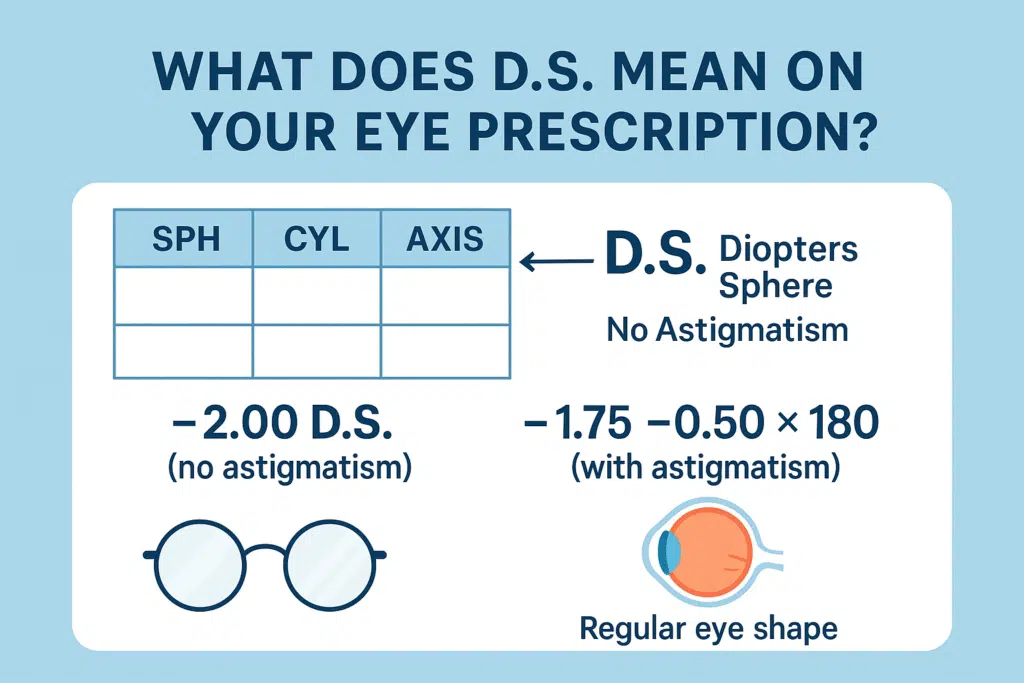
Why Optometrists Write D.S.
You might wonder, “If I don’t have astigmatism, why even write D.S.?”
D.S. has been added by the optometrists to complete a prescription and make it understandable.
It tells the optical lab:
Non cylinder power – reduce this lens to plain spherical.
This eliminates confusion when your lenses are ordered, including online ones. They are just checking that you did not have your eyes checked on whether it had astigmatism and that there is none.
What It Means If Only One Eye Has D.S.
It’s perfectly normal to see D.S. in one eye and CYL in the other. Most people have slight differences between their eyes.
- The curvature of one eye can be perfect, requiring only spherical correction.
- The other may have a bit of astigmatism, needing cylindrical correction.
Then you need not worry that you have only one eye that says D.S.– that is only to say that your eyes are not identical, and that is quite natural.
Does D.S. Mean You Have 20/20 Vision?
Not always.
D.S. does not imply perfect vision; you are just of the type of correction that is spherical.
Depending on the SPH value:
- -2.00 D.S. → Nearsighted
- +2.00 D.S. → Farsighted
- 0.00 (Plano) to 20/20 or almost perfect vision.
So, D.S. tells you about how your eye focuses light, not how good your eyesight is without glasses.
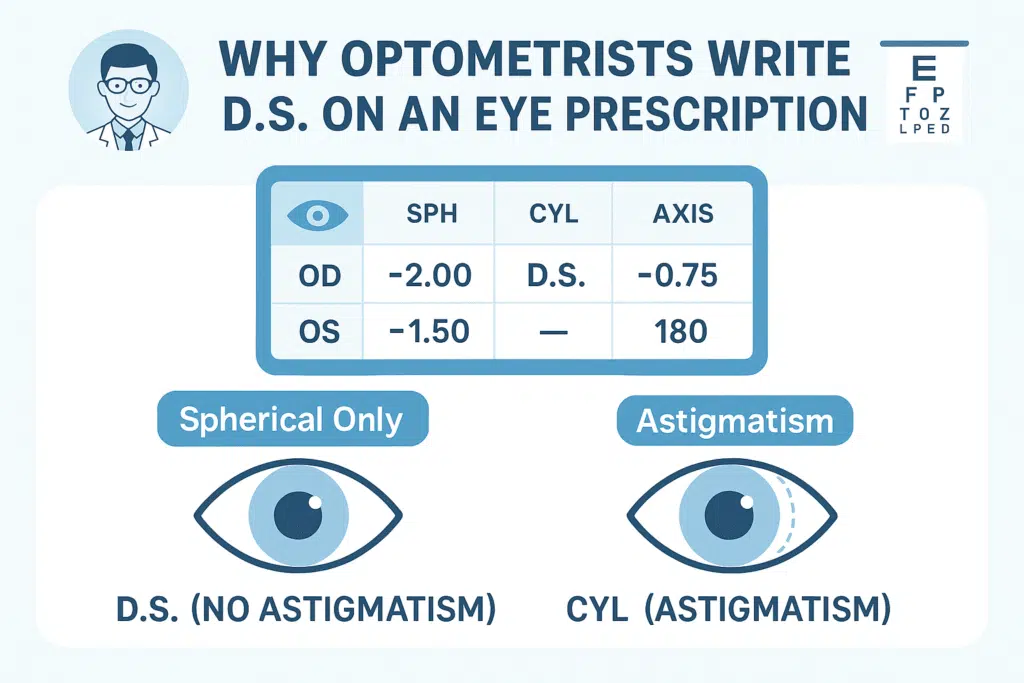
When Should You Visit an Optometrist Again?
Even if your prescription says D.S., regular eye checkups are still important. Vision can change over time, and astigmatism can develop gradually.
You should schedule an eye test if:
- You start having blurred or distorted vision.
- You have often had headaches or eyestrain.
- You find it harder to focus at different distances
D.S. in Digital Eye Prescriptions
On certain digital platforms, D.S. can be replaced by 0.00 or None with the emergence of digital prescriptions. No, there is nothing to worry about — much the same thing.
If you’re entering your prescription details online:
- In the “CYL” box, choose “0.00” or “None.”
- In case it is possible to enter any text, type in D.S.
That’s how online systems read “no astigmatism correction.”
Key Takeaways
Let’s summarise everything simply:
- D.S. = Diopters Sphere
- It implies that there will be no need for astigmatism correction.
- Appears in the CYL column of your prescription
- You could also be short-sighted or long-sighted.
- The D.S. lenses are less complex, lightweight, and less expensive.
- D.S. = spherical lenses only
- D.S. in one eye and not in the other one- perfectly natural.
Read Also: Contact Lens Inside Out? 5 Easy Ways to Check
Final Thoughts
As I went to explain eye prescriptions on EyesOnHunt.com originally, I realized that people would usually misinterpret D.S. But now you see it is all O.K. with D.S.
It just explains to you that you do not have astigmatism in your eye, making your lenses lighter, your prescription easier, and your life easier. For more details on D.S., you can visit our eye prescription calculator.




